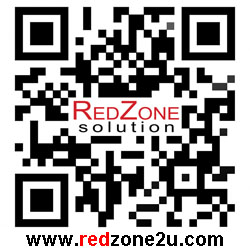Direct Thermal Label Sticker - 60x40mm, 800pcs/roll | Thermal Transfer Label
Size : 60x40mm
Quantity : 800pcs/roll
How to Choose Thermal Transfer Labels
Choosing the right thermal transfer labels can be a daunting task. Especially for small business owners and accountants who are not familiar with the intricacies of label selection.
Thermal transfer labels play a crucial role in managing business finances and inventory. They are used for barcode printing, product identification, and tracking.
Understanding the features and benefits of these labels can significantly streamline your financial management processes. It can also improve the efficiency of your business operations.
This guide aims to provide a comprehensive understanding of thermal transfer labels. It will help you make an informed decision when choosing the right labels for your business needs.
Understanding Thermal Transfer Labels
Thermal transfer labels differ from direct thermal labels in key ways. They use a ribbon to print, offering longer-lasting results.
The printing process involves heat transferring ink from ribbons to the label surface. This ensures durable and sharp images.
Choosing the right label depends on specific business requirements. Consider the label's application, durability, and longevity.
Key benefits of thermal transfer labels include:
- Durabilityfor long-term use
- Clarityfor barcode readability
- Versatilityfor various materials and surfaces
The Importance of Label Material and Adhesive
Choosing the right label material is crucial for performance. Each material suits different environments and uses.
Paper, polyester, and polypropylene are common options. Each has unique properties that affect durability.
Adhesive strength is also vital. Strong adhesives ensure labels stay in place.
Consider factors like surface type and temperature when selecting both materials and adhesives. This ensures optimal label performance.
Matching Labels with the Right Ribbons
Ribbons are vital to thermal transfer printing. They ensure clear, readable labels.
Different ribbons suit different applications. Wax ribbons work for everyday uses.
Consider resin or wax/resin blends for tougher conditions. These ribbons enhance durability in challenging settings.
Matching the right ribbon to the label material is key. It affects longevity and print quality.
Considering Label Size, Shape, and Environmental Factors
When choosing thermal labels, consider size and shape. These affect compatibility with products and readability.
Think about the environment where labels are used. Temperature and humidity can impact their effectiveness.
It's crucial to select labels that meet industry standards. This ensures compliance and avoids costly errors.
Keep these factors in mind:
- Product packaging dimensions
- Barcode size requirements
- Exposure to harsh conditions
These considerations help maintain label integrity and functionality over time.
Balancing Quality and Cost
In selecting thermal labels, balance quality with cost. High-quality labels provide durability but can impact the budget.
Consider label lifespan and performance needs. For short-term projects, economical options may suffice without sacrificing functionality.
Evaluate the total cost of ownership. This includes initial purchases and potential replacements, ensuring cost-effective decision-making.
Customization and Branding Opportunities
Thermal transfer labels offer great customization options. You can tailor them to meet branding needs. Custom designs enhance product recognition.
Include your logo and brand colors. This approach helps in marketing and creates a distinct identity. Choose label finishes to suit your style.
Supplier Reliability and Customer Support
Choosing the right supplier is crucial for quality labels. Reliability ensures a steady supply. Consistent quality reduces errors in labeling.
Great customer support can solve issues quickly. A responsive supplier enhances the overall experience. Ensure they provide assistance when needed.
Conclusion: Key Points to Remember
Selecting the right thermal transfer label involves multiple considerations. Always align label choices with specific business needs. Consider environmental factors and the intended application.
Key points to focus on:
- Prioritize material and adhesive quality.
- Match labels with compatible ribbons.
- Balance cost with functionality.

| Zone | Weight | Delivery Fee (RM) |
|---|---|---|
| West Malaysia | First 1.00 kg | 12.00 |
| Extra 1.00 kg | 2.00 | |
| East Malaysia | First 1.00 kg | 20.00 |
| Extra 1.00 kg | 11.45 |




